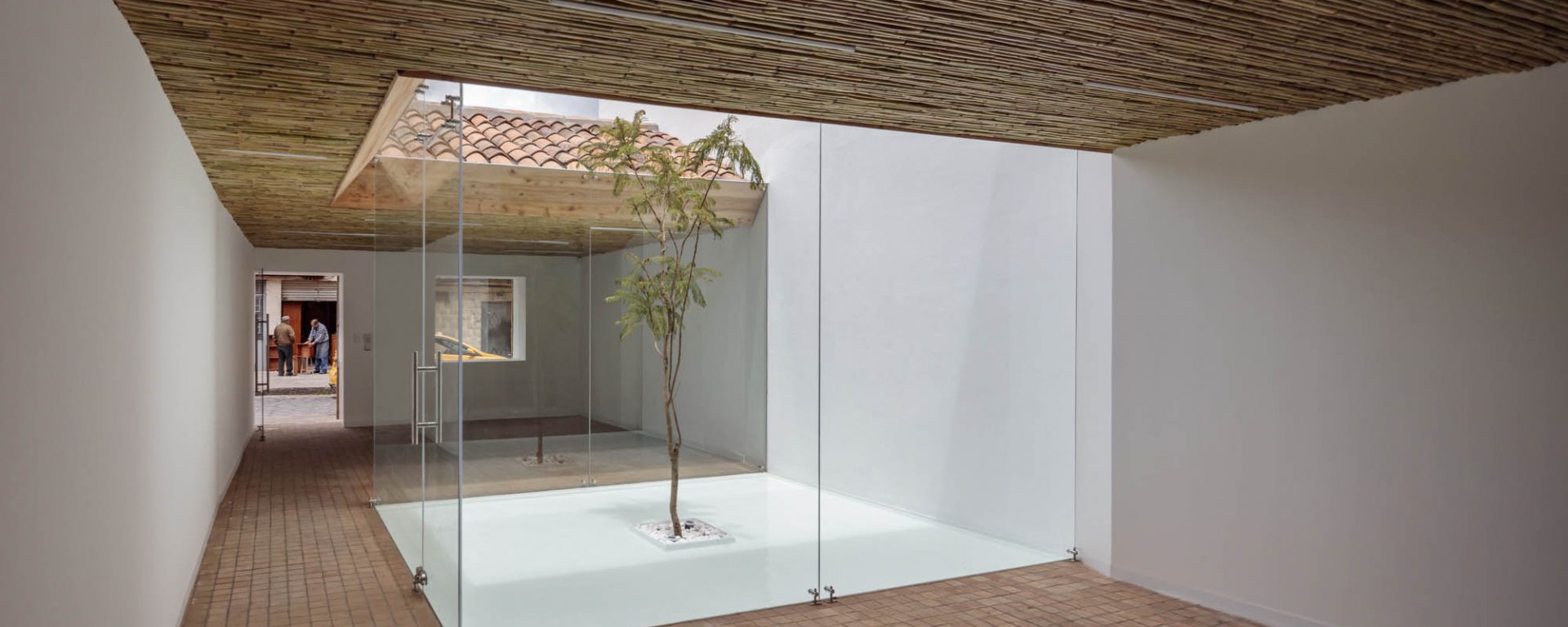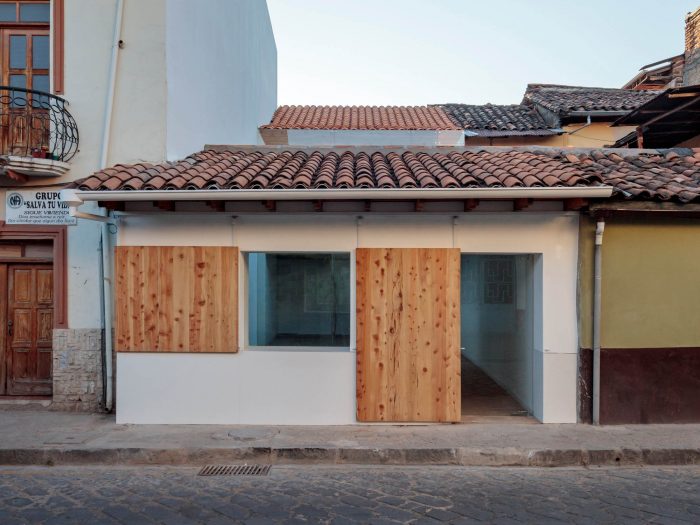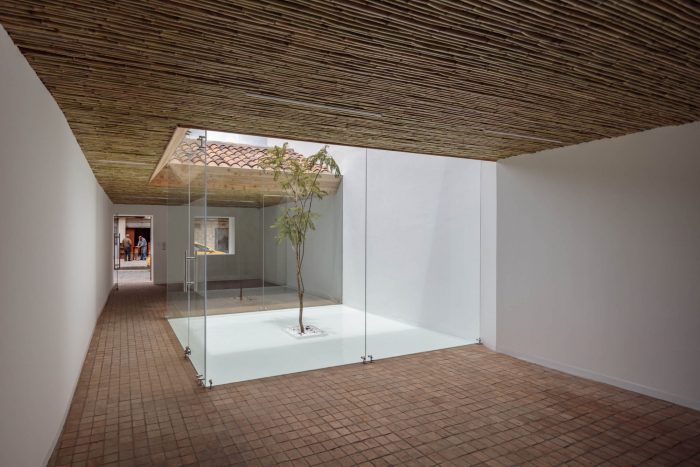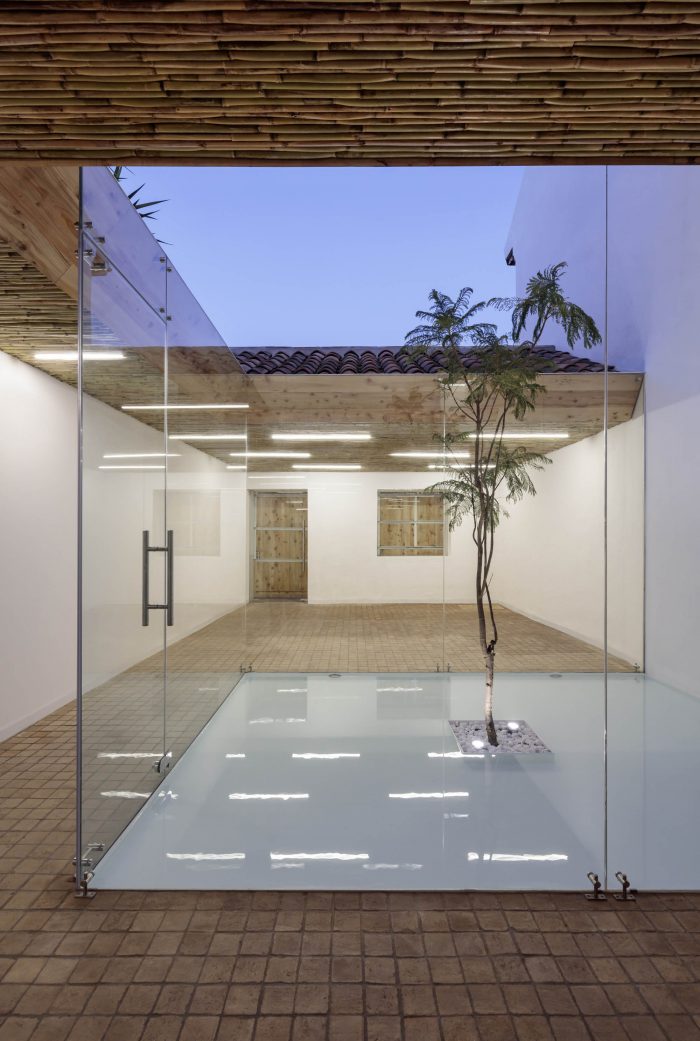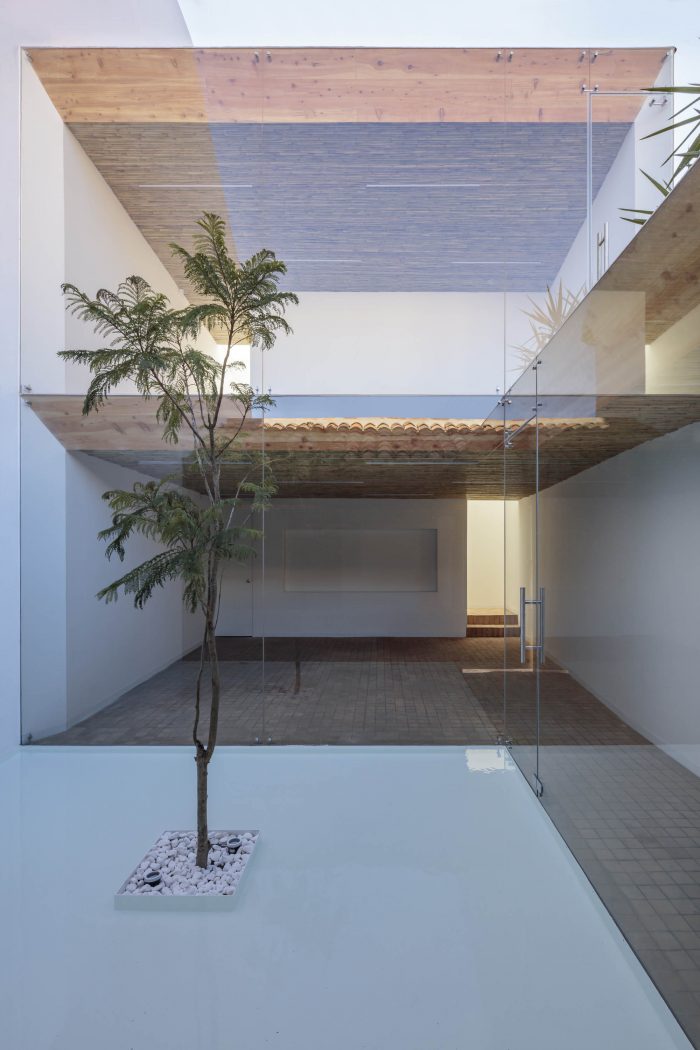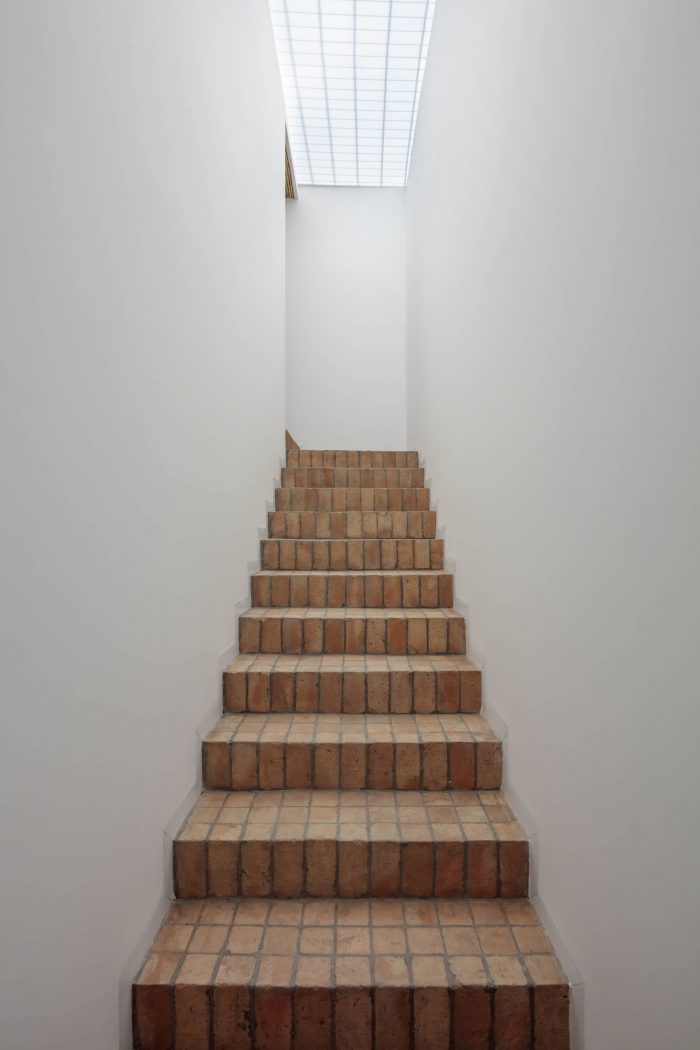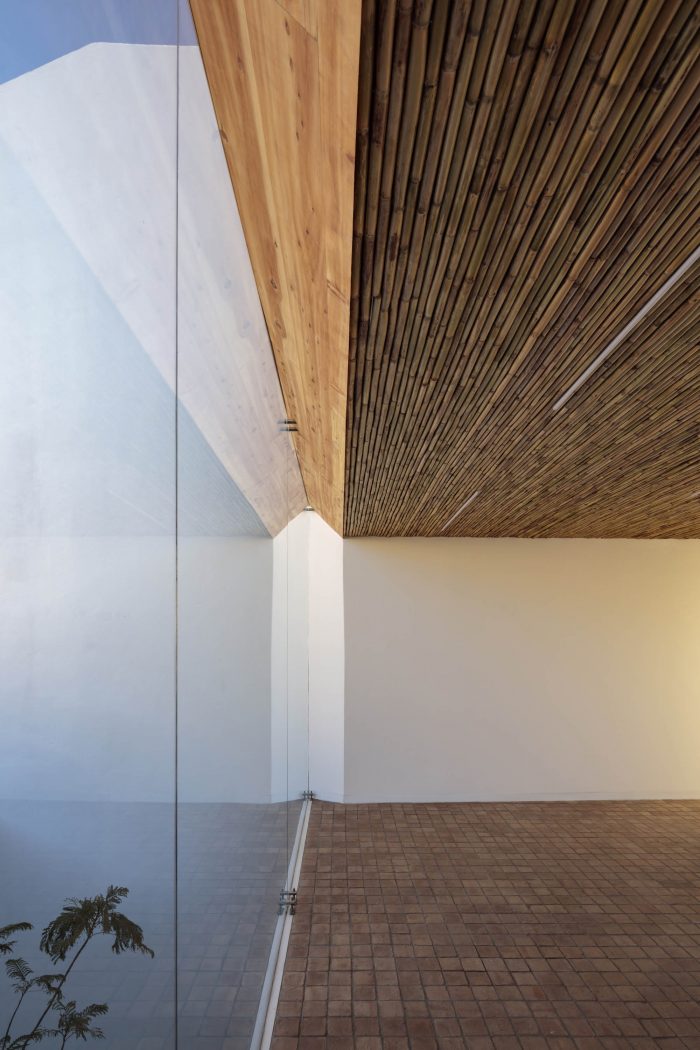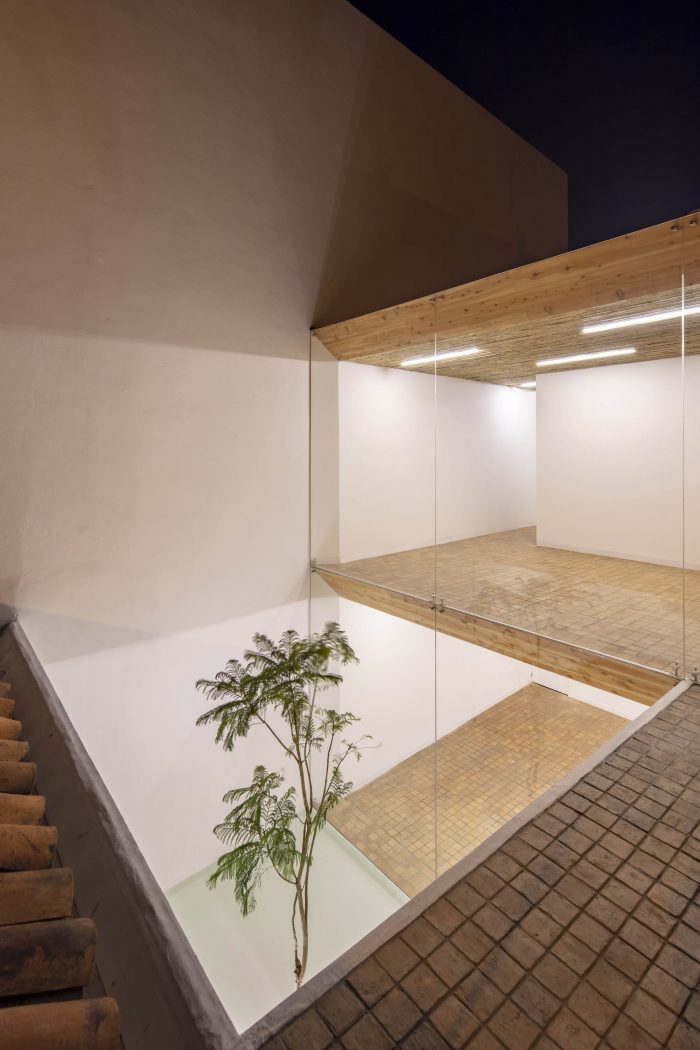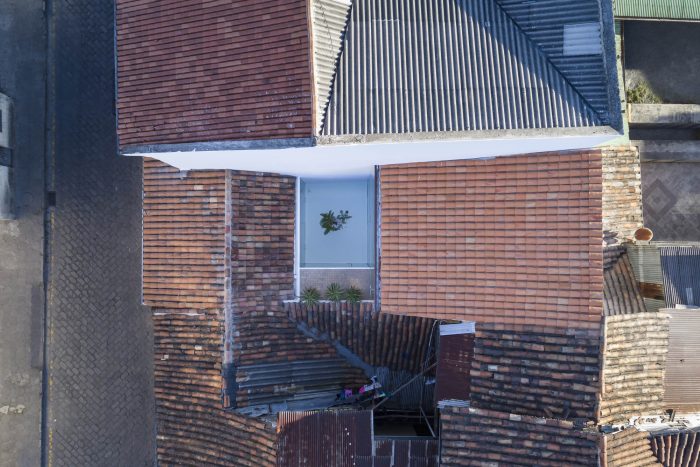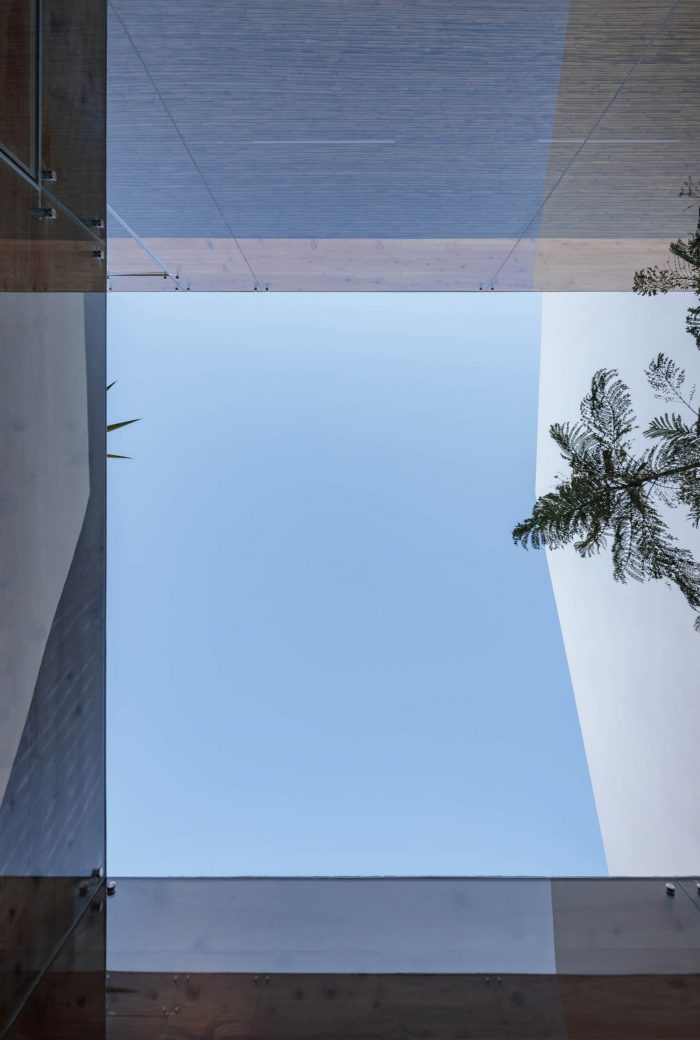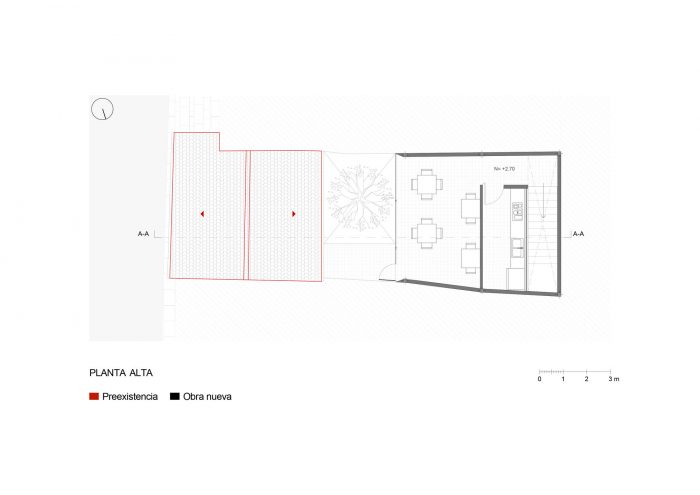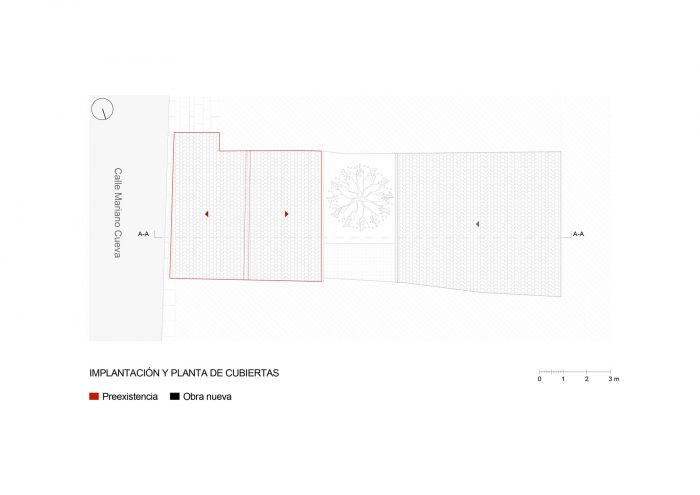在昆卡的历史中心,在Todos Santos社区内,其特点是主要使用面包店和传统的柴火炉,这个项目的开发,鼓励类似的使用。设计采用了过去建筑的基本原则,以现代语言,不仅通过类型学和材料,而且通过形式上的严谨。
In the Historic Center of Cuenca, within the Todos Santos neighborhood, characterized by its main use of bakeries and traditional wood-fired ovens, this project is developed that encourages a similar use. The design employs essential principles of the architecture of the past in contemporary language, not only through typology and materiality, but also through formal austerity.
该物业有一个小结构的遗产利益,与环境价值分类,位于面对Mariano Cueva街道。它的存在是由一个拱形瓦片屋顶定义的,它位于三面土坯墙上:外墙和两侧。通过使用传统的建筑技术,这些元素被修复并融入到方案中。
The property had a small structure of patrimonial interest, categorized with environmental value, located facing Mariano Cueva street. The pre-existence was defined by a gabled tile roof that rested on three adobe walls: the façade and the sides. Through the use of traditional construction techniques, these elements were rehabilitated and incorporated into the proposal.
该项目基于房屋-天井的类型,围绕一个干净的中央天井配置环境,使室内通风并充满光线。该建筑呈现出一个植物的前部体量,由一条走道连接到两层楼的后部体量,其屋顶承担了相邻屋顶的高度、坡度和材料性。
The project, based on the house-patio typology, configures the environments around a clean central patio that ventilates and fills the interior with light. The construction presents a front volume of a plant connected by a walkway to a rear volume of two floors whose roof assumes the height, slope and materiality of the adjoining roof.
对于新的结构,选择了一个基于钢型材的建筑系统,目的是减少结构元素的截面,尽可能地优化空间,并产生自由和多功能的楼层。砖和芦苇的使用为空间提供了温暖和地方特色,而玻璃和白色的墙壁则增加了光线,扩大了空间感知。
For the new structure, a construction system based on steel profiles was chosen, with the aim of reducing the section of the structural elements, optimizing space as much as possible and generating free and versatile floors. The use of brick and reed provide warmth and local character to the space, while the glass and white of the walls multiply the light and broaden the spatial perception.
天井,是一个向天空开放的空间,它能引起人们对自身存在的内在问题以及人与自然之间永恒关系的思考,它一直存在于各个时代、多个地区的建筑中。我们对这些关系进行了探索,将其应用在不同的项目中,重新发现这个空间的美感和实用性。
The patio, a space open to the sky that invites reflection on issues inherent to one’s own being and the eternal relationship between man and nature, has been present in architectures of all times, in multiple regions. We have explored these relationships to apply them in various projects, rediscovering the beauty and utility of this space.
一面水镜定义了天井的表面,被光线斜穿而过。一株玉兰标志着空间的中心,它的蓝紫色花开的华丽对比效果,微风吹动它的叶子,鸟儿小心翼翼的来访,天空的倒影和云朵的流逝,雨滴打在水面上画出的浪花的声音,寂静,它们成为项目的建筑师,映照着生命和时间。无需多言。
A water mirror defines the surface of the patio that is crossed diagonally by the light. A jacaranda marks the center of the space, its magnificent contrasting effect of blue-violet flowering, the breeze that moves its foliage, the cautious visit of the birds, the reflection of the sky and the passing of the clouds, the sound of the raindrops hitting the water and drawing waves, silence, they become architects of the project and reflect life and time. No more is needed.
建筑师: IVÁN QUIZHPE ARQUITECTOS
面积:1291平方英尺
年份:2019年
照片:BICUBIK
制造商:Fairis
首席建筑师:Iván Andrés Quizhpe
施工::IVÁN QUIZHPE ARQUITECTOS
城市 : Cuenca
国家:厄瓜多尔
Architects: IVÁN QUIZHPE ARQUITECTOS
Area: 1291 ft²
Year: 2019
Photographs: BICUBIK
Manufacturers: Fairis
Lead Architect: Iván Andrés Quizhpe
Construction:IVÁN QUIZHPE ARQUITECTOS
City:Cuenca
Country:Ecuador

